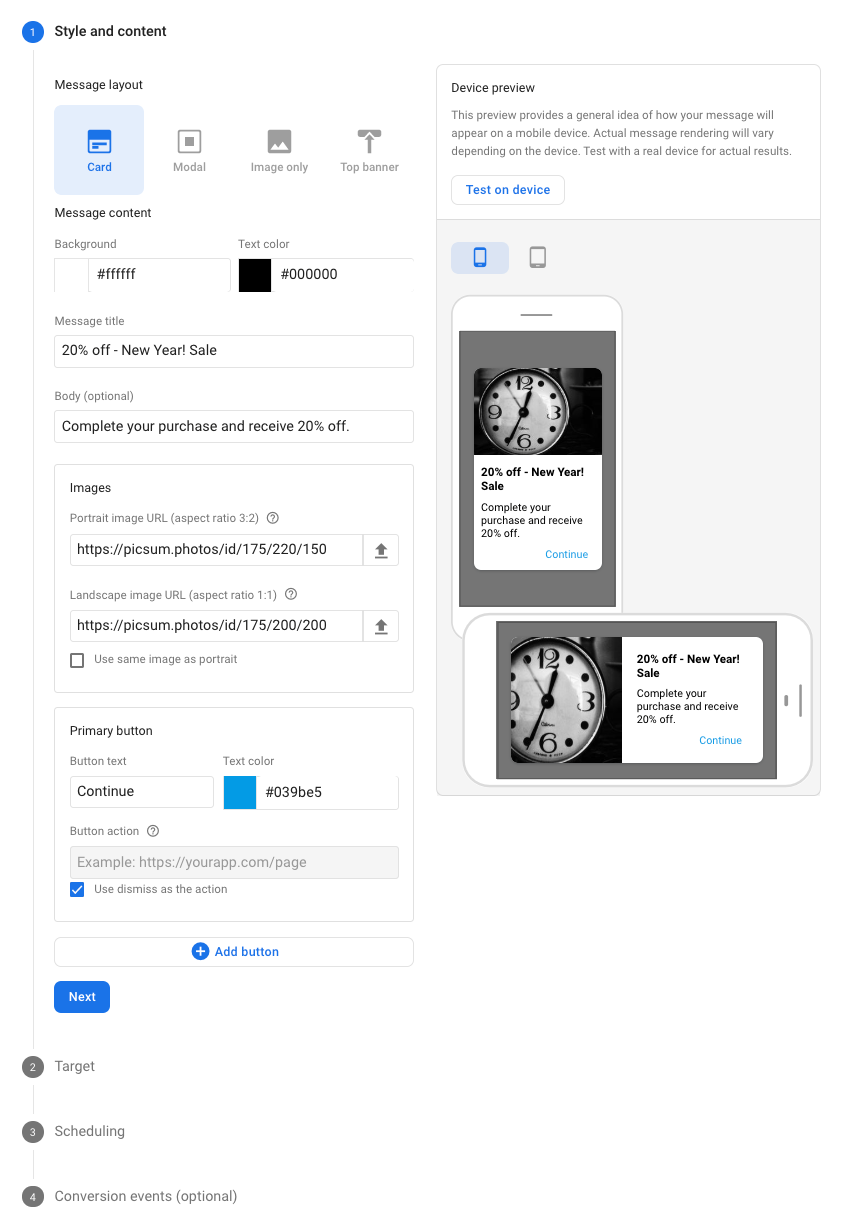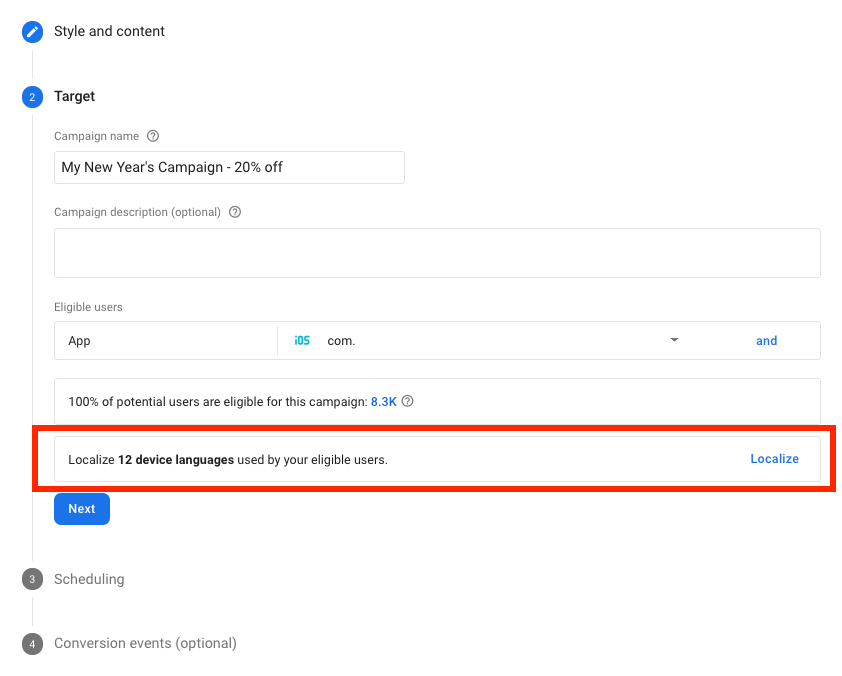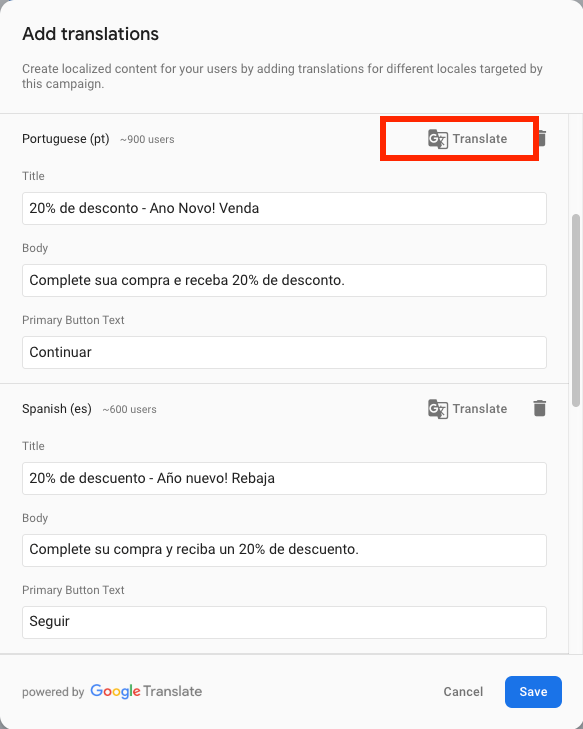It’s been over a year since we first announced Firebase In-App Messaging to help you guide app users who are actively using your app by sending them targeted and contextual messages. In-App Messaging allows you to communicate with your most valuable users and deepen their engagement by surfacing relevant offers, information, and tips as they use your app.
We have been actively working on adding more features and expanding on the capabilities of Firebase In-App messaging (such as new message layouts), and we’re excited to highlight another new feature today - the ability to auto-translate your message into multiple languages using Google Translate.
As your app user base expands into more countries and languages, it’s important to make sure messages are localized for each recipient to improve engagement, and for that we have added an easy way to translate your message to many languages. To get started is simple.
1. First choose your message style and content.
2. Set your target criteria
Then in the targeting section, when you select your app, Firebase will look at your audience and determine if localizing message content would help, and provide you a helpful nudge to provide localized content:
3. Click on Localize, and you will see the following dialog.
The first section of the dialog contains the default language and strings to be localized. And if you would like to provide alternative translated messages, click on Localize next to the language you would like.
When you click on Localize, you can either enter the localized message yourself, or click on the Translate button and let Google Translate automatically do the translation for you.
4. Save your translations
Once you are done with all the translations, click on Save and continue completing the rest of the steps for your messaging campaign.
Unless you provide localized messages, all your users - irregardless of their locale - will receive the message in the default language. If you provide translations, users who’s locale matches available translations will get the localized message, and everyone else will get the default message.
We have a lot more product updates in the works for this year, and look forward to sharing them with you. If you are not already using Firebase In-App Messaging, then 2020 is the year to start. Get started today by checking out the documentation:




